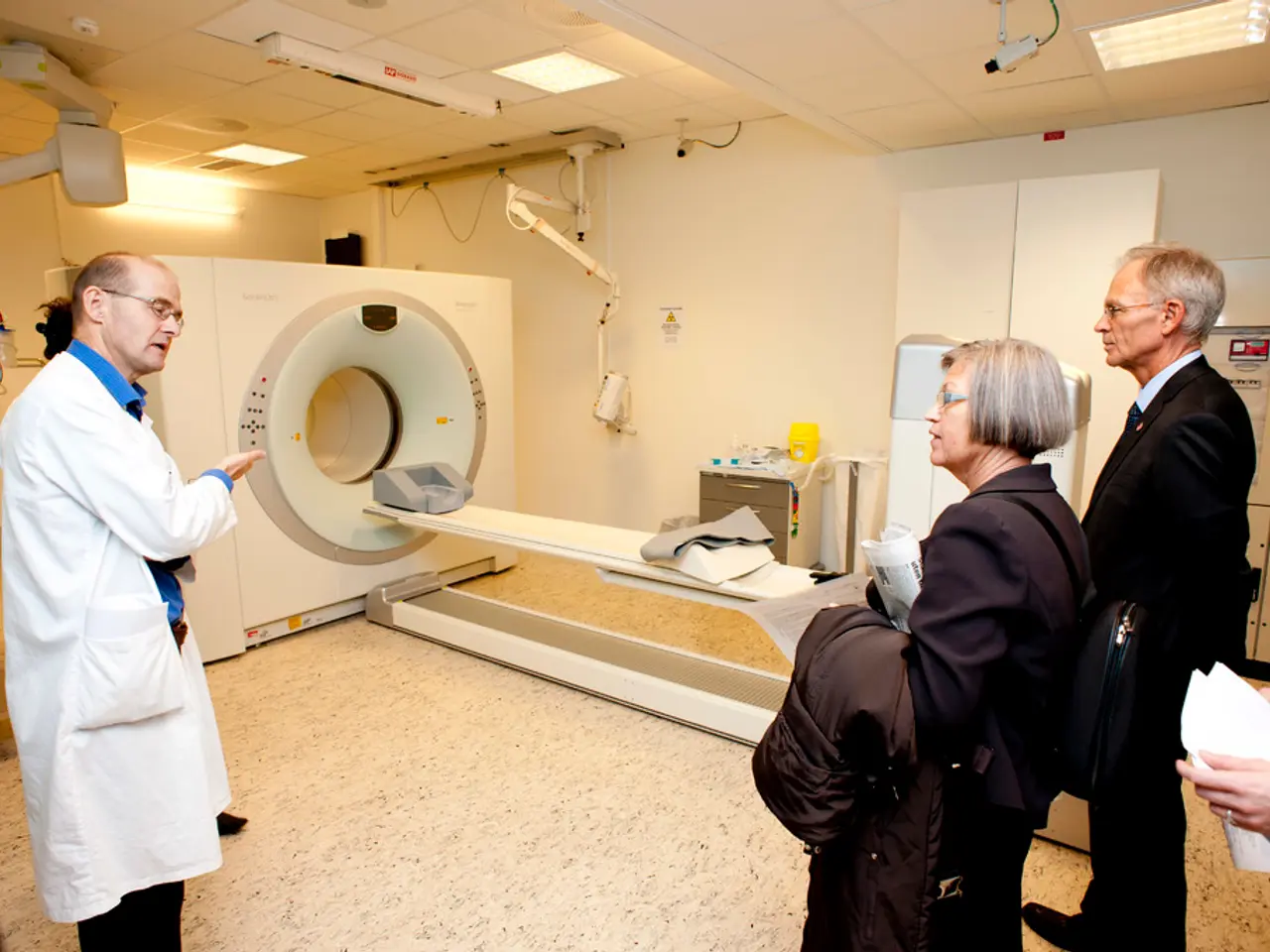Guiding Distant Collaboration in Radiology: Mastering Leadership of Remote Teams through Purpose and Presence
In the modern world of remote work, maintaining a sense of trust and cohesion within teams has become increasingly important. This is especially true in the field of radiology, where accurate and timely diagnoses can mean the difference between life and death.
One key factor in building trust in remote radiology teams is effective communication. Leaders must communicate clearly and consistently about expectations, goals, challenges, and successes. This transparency creates inclusion and trust in leadership’s direction. Structured, transparent communication is essential for fostering a culture of openness and approachability, which is crucial for effective communication in remote settings.
Leaders should be mindful of their daily behaviours, as small, consistent acts of presence can greatly contribute to building psychological safety. This can be achieved through prompt responses to questions, active listening without judgment, admitting uncertainties, and showing genuine personal interest in team members. These actions build psychological safety, allowing radiologists to speak up and take risks without fear.
Organizing peer learning meetings and case conferences focused on missed or complex cases in a non-punitive, supportive atmosphere also fosters participation and trust among remote radiologists. These environments encourage collaboration and learning, helping to combat feelings of isolation that can erode trust and impact team culture and patient care.
Addressing social isolation with meaningful engagement is another important strategy. While casual virtual social events often have low attendance, in-person departmental celebrations and continuing medical education events help remote radiologists feel included and valued.
The use of secure, HIPAA-compliant communication tools enables fast, direct communication between radiologists and leadership on trusted platforms. This bolsters real-time connectivity and trust, ensuring that issues can be addressed promptly and effectively.
Practices such as celebrating milestones, providing real-time feedback, and encouraging anonymous suggestions without fear enhance engagement and reinforce trust. Clear role definitions and leadership structures also help clarify responsibilities and improve communication flow, preventing friction that can undermine trust.
By staying true to its mission, The Radiology Group has built a sense of pride and purpose among its team members, which helps maintain trust and engagement in a remote setting. The shift to remote radiology has made it easier to bring expertise to underserved and rural communities, as advanced PACS systems, secure high-speed networks, and robust imaging software enable radiologists to work from home offices, rural workstations, or across state lines.
Effective leadership in a remote radiology team starts with being present digitally, emotionally, and professionally. Organizations that foster empathy, visibility, and intentional communication build communities among their remote teams, creating an environment where trust can thrive.
- Effective patient care in remote radiology relies heavily on the use of advanced technology for secure and timely communication.
- In the field of healthcare, fostering a culture of openness and approachability in remote teams is critical for effective patient care, alongside science-based knowledge and technologies.
- With the seemingly endless possibilities of tech innovation for health-and-wellness, it's essential for leaders in finance-backed business ventures to prioritize the implementation of transparent and reliable technology solutions that prioritize patient care.
- As the landscape of remote radiology progresses, collaborative leadership styles that emphasize open communication, transparency, and empathy are necessary for fostering trust among teams, thereby ensuring accurate diagnoses and quality patient care.
- To maintain trust and engagement in a remote radiology team, it's beneficial for organizations to invest not only in technology but also in creating opportunities for in-person social interactions, promoting camaraderie and fostering a sense of community and shared purpose among team members.




